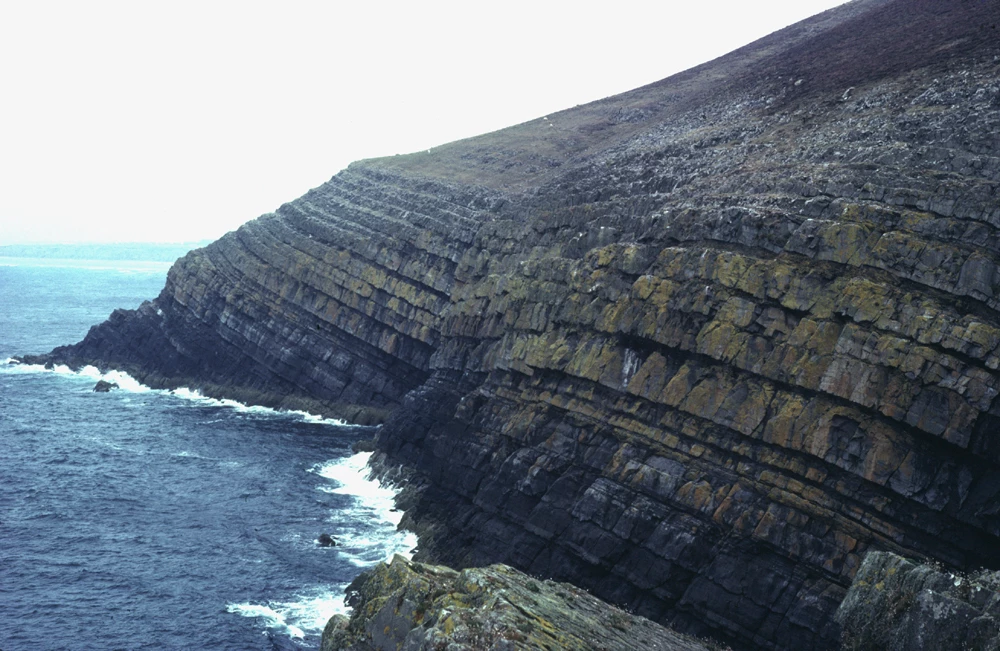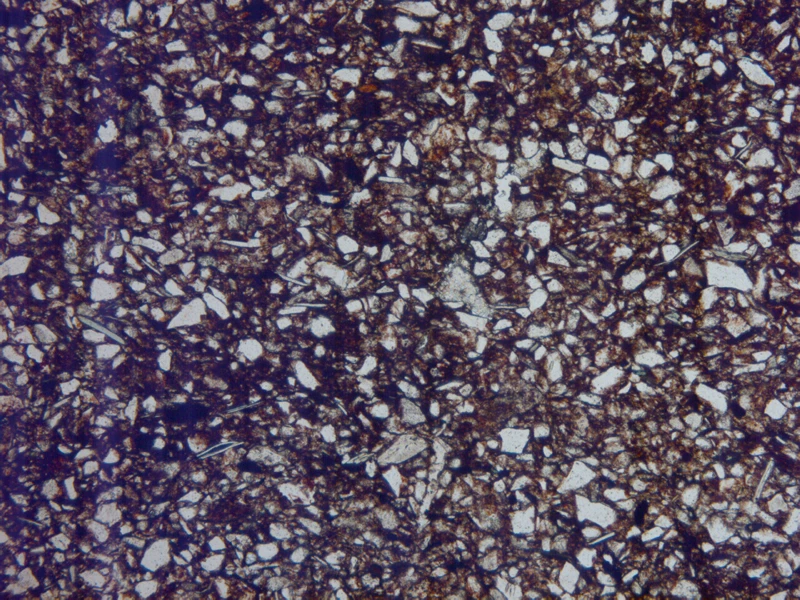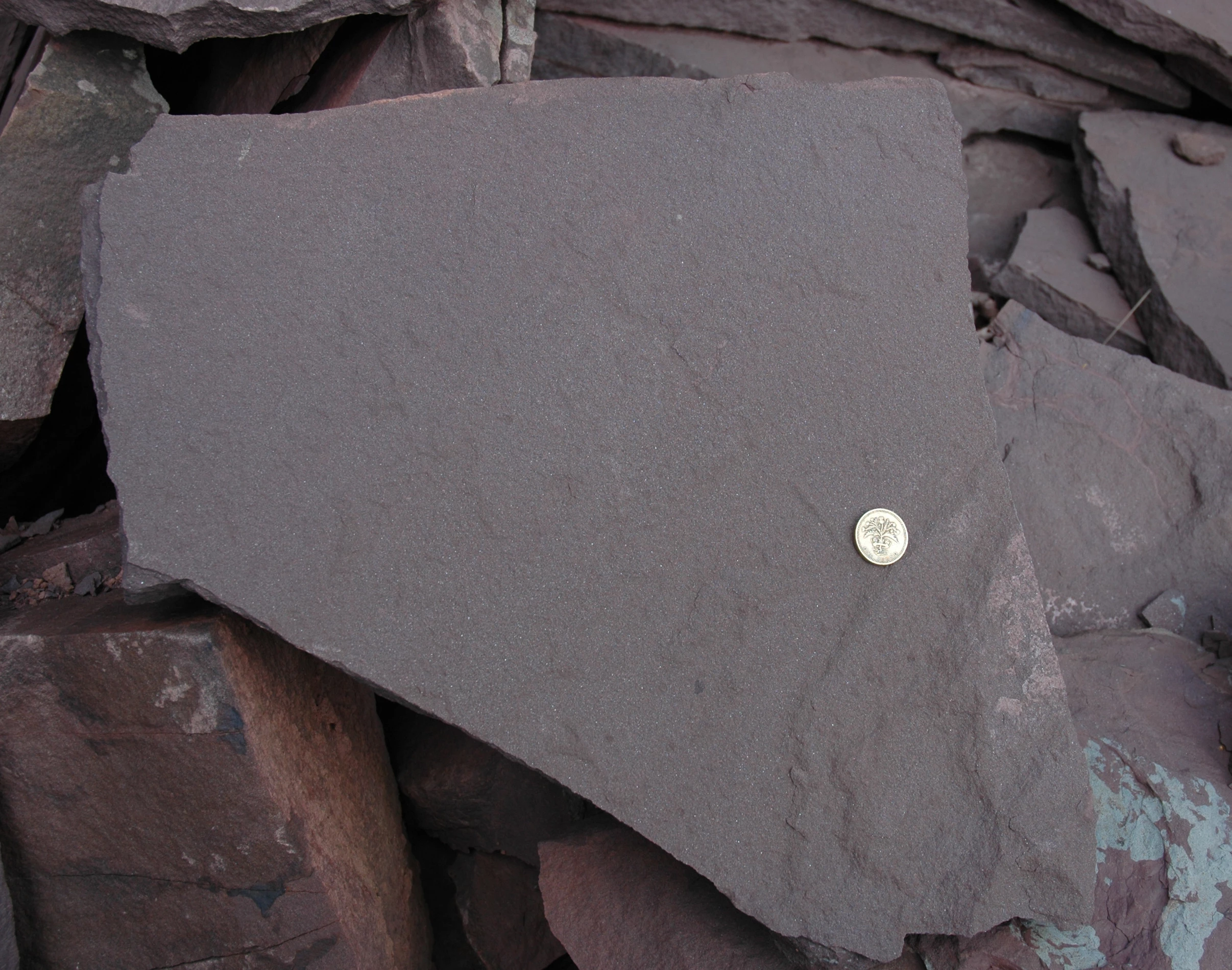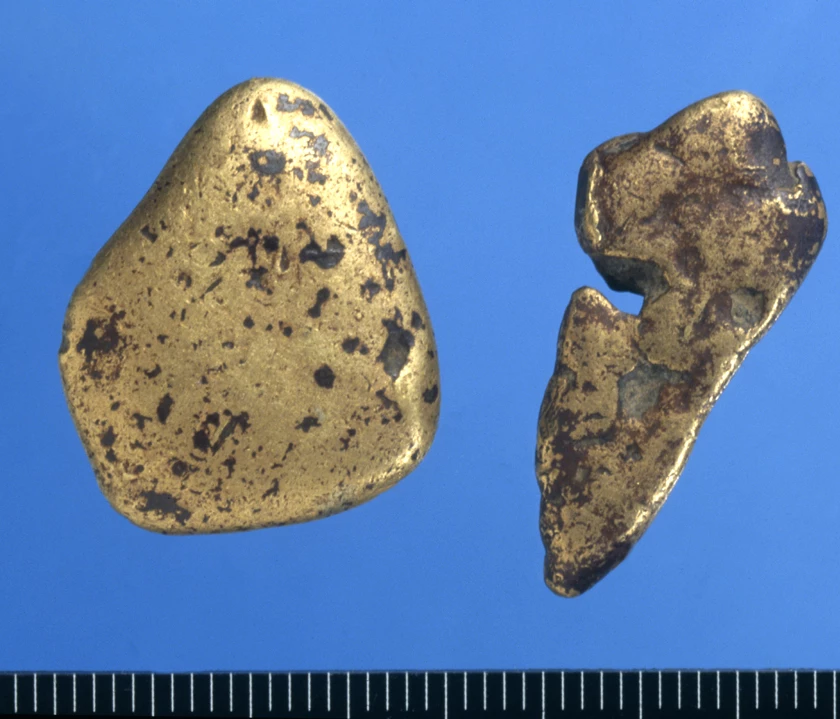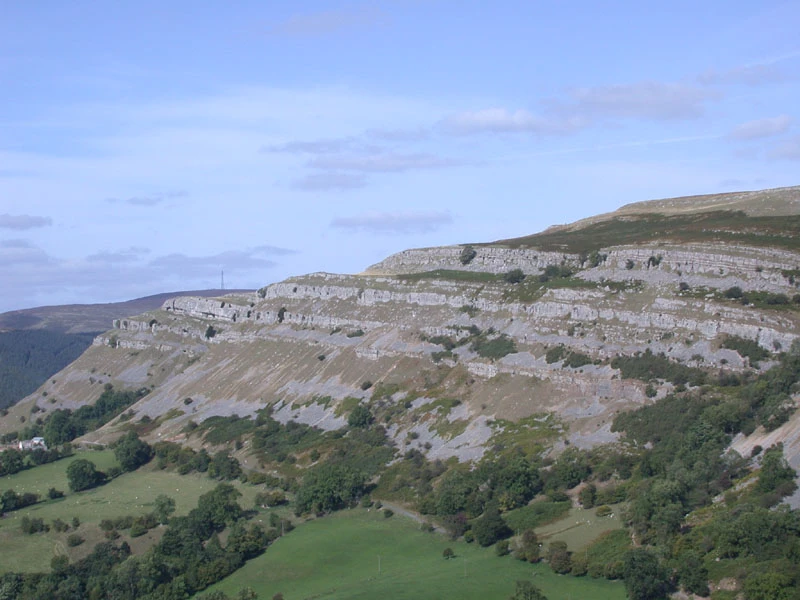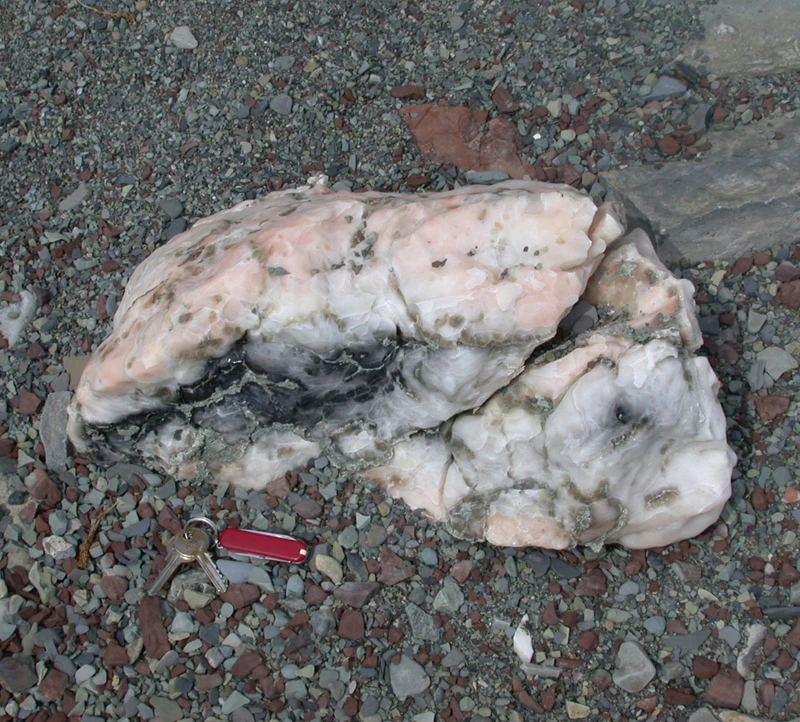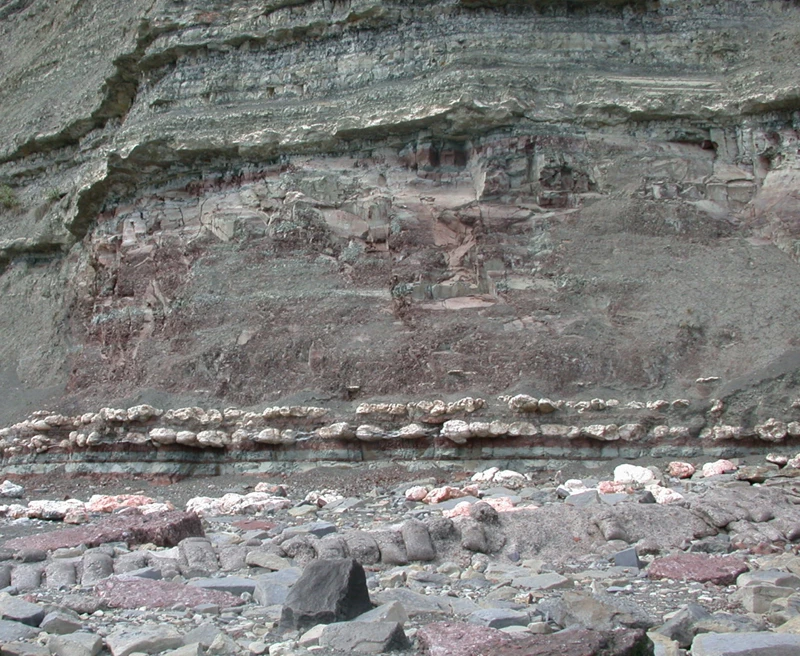Sedimentary Minerals (Saesneg yn unig)
Like other rock-types, sedimentary rocks are composed of a variety of minerals. There are two broad groups of sedimentary rocks, clastic (or detrital) sediments which accumulate from fragments of pre-existing rocks and minerals, and chemical sediments or precipitates. Sedimentary rocks may be unconsolidated or consolidated, and the transformation from the former to the latter is known as diagenesis, a process during which further minerals form.
Minerals in clastic sediments
Clastic sedimentary rocks are those made up of detritus that has been eroded by the actions of wind, water and ice from pre-existing rocks of all types. Such rocks are widespread in Wales, with vast thicknesses of sandstones, composed dominantly of quartz grains, and clay mineral-rich mudstones. Whereas the bulk of minerals making up clastic sedimentary rocks are common rock-forming species, such as quartz, feldspar and mica, both common and minor minerals in an eroding rock may end up in the resulting sediment. Minerals that have been transported as detrital grains, to end up in a sedimentary rock, are referred to as allogenic.
Studying the less common minerals present in sedimentary rocks can provide valuable information regarding the source rocks that were eroded, the direction in which the sediment was transported by ice, water or wind, or the extent of ancient river or glacier systems. For instance, the minerals andalusite, staurolite and cordierite are not found in metamorphic rocks in Wales but have been described as detrital grains in glacial sediments, indicating that the sediments were produced by erosion of such rocks in Scotland or Ireland, then transported a considerable distance and deposited in Wales.
Some detrital minerals are of economic importance, because gravity and water action are very efficient at sorting mineral grains according to their density. The end result is that "heavy" minerals tend to become concentrated, often in layers close to, or on, the bedrock underlying a river. Such deposits are termed placers and are an important source of gold, tin and many other minerals worldwide. In Wales, placer-gold deposits, now virtually exhausted, were formerly worked in the Dolgellau area.
Sedimentary rocks formed from Chemical precipitation
Chemical sediments result from precipitation of dissolved substances from sea or lake water. The most common products are limestones, deposited by the precipitation of calcium carbonate as calcite. Precipitation may occur directly from water or involve organisms in biochemical processes.
The most widespread limestones in Wales are those of Lower Carboniferous age, which outcrop across Clwyd, and also in southern Wales around the margins of the coalfield. Other important limestones include Silurian reef-deposits in the Welsh Borderland and Lower Jurassic muddy limestones exposed along the Bristol Channel coast.
In some limestones, magnesium substitutes for the calcium in calcite to form the mineral dolomite. Such rocks are termed dolomites or dolomitic limestones. Iron carbonate may also accumulate, particularly in sedimentary environments where much organic matter is present. This produces beds of fine-grained, heavy clay-ironstone which is particularly common in the South Wales Coalfield, where it was mined as an iron ore.
Also included within chemical sediments are evaporite deposits. The minerals within evaporites form by precipitation from solutions by evaporation - usually in arid environments such as desert salt-lakes. The most common minerals present are gypsum, anhydrite and halite (rock-salt), sometimes in sufficient quantity to be commercially mined. Evaporites occur within Triassic rocks exposed along the South Wales coast near Cardiff, where the beds of gypsum form conspicuous white layers in the red marls. All of these precipitated minerals have formed in place, without transport, and are referred to as authigenic.
Diagenetic minerals – consolidation of sediment into rock
Authigenic minerals are also formed during diagenesis, a process involving all of the chemical, physical, and biological changes undergone by any sediment following deposition and during its transformation into solid rock. This includes compaction by the pressure of increasingly deep burial, the ensuing squeezing out of much of the trapped pore-water in the sediment and the dissolution and reprecipitation of minerals to form cements to bind mineral and rock grains. Diagenesis is controlled by increases in temperature and pressure and by the amount of time over which such changes occur.
In some sediments, unusually high concentrations of metals and other elements lead to the growth, during diagenesis, of authigenic minerals in crystals (such as pyrite cubes), as fossil replacements and as nodules or concretions. Concretions are spheroidal or lenticular bodies of mineral-rich rock. In shaly rocks their greater hardness makes them stand out from eroded surfaces. Common concretion-forming minerals found in Wales include siderite (‘ironstone’), calcite, quartz, pyrite, apatite and the rare-earth phosphate, monazite.
Concretions may also contain internal cracks (‘septa’) within which other minerals have subsequently crystallized, in which case they are termed septarian concretions. In Wales the best-known of these occur in the South Wales Coalfield, where beautifully-crystallized millerite, quartz, galena and other minerals have been collected by breaking such concretions open. These have their uses to the geologist too: trapped fluids within quartz crystals from the concretions have yielded valuable information regarding the pressures and temperatures under which diagenesis (including coal formation) took place.
